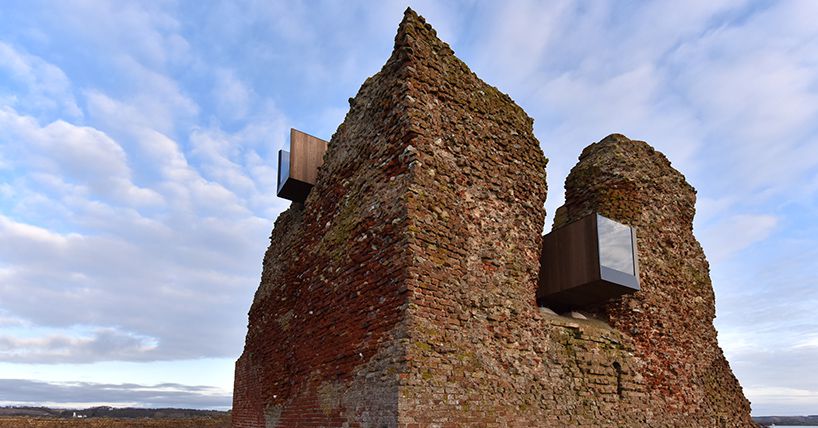Ruderne is an intriguing historical site in Denmark that attracts visitors with its ancient ruins and remarkable stories from the past. These remnants tell tales of medieval architecture, Danish heritage, and the lives of those who lived centuries ago. With each stone carrying a whisper from the past, Ruderne stands as a testament to history’s resilience and beauty.
Whether you’re a history buff, an archaeology enthusiast, or simply curious about Denmark’s medieval past, Ruderne is a treasure trove of cultural significance waiting to be explored. In this article, we’ll delve into its historical importance, architectural marvels, and what makes it a must-visit for anyone interested in Danish history.
The Historical Significance of Ruderne
Ruderne, located in the scenic region of Denmark, dates back to the Middle Ages. These ancient ruins once formed part of a larger structure, believed to have been a medieval castle or stronghold. The name itself, “Ruderne,” can be roughly translated to mean “the ruins,” a fitting description for what remains today.
While much of the original structure has been lost to time, the ruins still hold a sense of grandeur. These remnants provide a glimpse into a time when Denmark was establishing itself as a powerful European kingdom. The site played a crucial role in local governance and defense, with the castle acting as a central point for trade, military operations, and political decisions in the region.
Key Events That Shaped Ruderne
Ruderne’s history is shaped by several key events, including regional conflicts, changes in monarchy, and the gradual evolution of Denmark’s national identity. However, Some notable events that impacted the development and eventual ruin of this historical site include:
- The Danish-Norwegian Union: During the 15th and 16th centuries, Denmark’s political landscape was influenced by its union with Norway, leading to periods of conflict and strife. Ruderne, like many castles of the time, bore witness to these political changes.
- The Reformation: The Protestant Reformation swept across Europe in the 16th century, and Denmark was no exception. Many medieval structures were repurposed or abandoned during this period, which may explain the current state of Ruderne.
- Local Conflicts: Ruderne was also affected by local skirmishes and feuds, which led to parts of the castle being damaged and eventually abandoned.
Architectural Marvels at Ruderne
Despite being in ruins, Ruderne is a site of great architectural interest. The remaining stone walls and foundations are characteristic of medieval Danish construction, featuring techniques that highlight the ingenuity of the period. Moreover, The stones used in Ruderne’s construction are a blend of local materials, which allowed the castle to blend seamlessly with its natural surroundings.
Unique Features of Ruderne’s Architecture
- Thick Stone Walls: Ruderne’s walls were built to withstand attacks, with some sections still standing tall despite centuries of exposure to the elements. These walls offer insight into the defensive priorities of medieval architects.
- Strategic Location: Positioned on elevated terrain, Ruderne was designed to provide its inhabitants with a strategic advantage. The elevation allowed for better defense and a clear view of approaching enemies.
- Integrated Design: The ruins showcase an integrated architectural approach where different sections of the castle serve specific functions—from living quarters to storage spaces for weaponry and food supplies.
Ruderne and Danish Cultural Heritage

Ruderne is more than just a pile of old stones—it is a key element of Danish cultural heritage. The site has been preserved to allow visitors a chance to connect with Denmark’s medieval past, offering educational opportunities and a deeper understanding of the country’s history.
The role of Ruderne in Danish culture goes beyond its historical significance. Today, it serves as a symbol of endurance and national pride. The ruins have been the subject of numerous archaeological studies, helping scholars piece together the lifestyle and social structures of the people who once lived there.
- Educational Programs: Schools and universities in Denmark often use Ruderne as an educational site, offering students a hands-on experience with history and archaeology.
- Tourism and Preservation: Efforts to preserve Ruderne have made it a popular tourist destination. Visitors can explore the ruins while learning about Denmark’s medieval period through guided tours and information panels.
Modern-day Importance
In today’s world, Ruderne stands as a reminder of the challenges faced by past generations. It invites reflection on the evolution of societal structures, the importance of historical preservation, and the beauty found in ancient ruins.
Why Visit Ruderne?
Visiting Ruderne is like stepping into a time machine that takes you back to medieval Denmark. The site is surrounded by lush greenery and rolling hills, creating a serene atmosphere that contrasts with the once-bustling activity of the castle. Here are some compelling reasons to add Ruderne to your travel itinerary:
- Experience Medieval History Firsthand: Ruderne offers a rare opportunity to walk through the remains of a medieval castle and imagine the lives of those who once called it home.
- Stunning Scenery: The natural beauty surrounding the ruins is breathtaking, providing visitors with a peaceful escape into nature. Whether you’re visiting in the summer, when the grounds are lush and green, or in the autumn, when the leaves change color, the scenery is sure to impress.
- Archaeological Interest: If you’re fascinated by archaeology, Ruderne is a must-visit. Ongoing research continues to uncover new information about the site, and visitors may even catch a glimpse of archaeologists at work.
Key Highlights of a Visit to Ruderne
- Guided Tours: Expert guides offer detailed explanations about the history of the castle and its significance in Danish history.
- Interactive Exhibits: Several interactive exhibits at the site allow visitors to explore medieval life in Denmark through hands-on activities and digital displays.
- Photography Opportunities: The ruins, set against a backdrop of nature, offer excellent opportunities for photography enthusiasts.
How to Reach Ruderne
Reaching Ruderne is relatively easy for travelers exploring Denmark. Located in a picturesque part of the country, the site is accessible by both car and public transport.
- By Car: Ruderne is about a 1-hour drive from the nearest city. Roads are well-marked, and parking is available on-site.
- Public Transport: For those relying on public transport, buses run regularly from nearby towns and cities, making Ruderne a convenient day trip.
Best Time to Visit Ruderne
The best time to visit Ruderne depends on what you want to experience:
- Spring and Summer: Ideal for outdoor exploration and photography, as the site is surrounded by vibrant greenery and blooming flowers.
- Autumn: Offers a quieter, more reflective atmosphere, with the ruins bathed in the golden hues of autumn leaves.
- Winter: While the site remains open during the winter months, be prepared for cold weather and shorter days.
Essential Travel Tips for Ruderne
- Wear Comfortable Shoes: The terrain around the ruins can be uneven, so be sure to wear sturdy footwear.
- Bring a Camera: The site is incredibly photogenic, with countless opportunities to capture the ruins and surrounding landscape.
- Check for Special Events: Occasionally, Ruderne hosts events or festivals that celebrate Danish history, offering visitors a unique experience.
The Future of Ruderne: Preservation and Conservation
Preserving Ruderne for future generations is a priority for Danish authorities. Conservation efforts are ongoing, with archaeologists and historians working together to protect the site from further deterioration. Sustainable tourism initiatives have also been introduced, ensuring that visitors can continue to enjoy the ruins without causing harm to the delicate structures.
Efforts include:
- Restoration Projects: Some sections of the ruins have been reinforced to prevent collapse and preserve their historical integrity.
- Educational Outreach: Local schools and universities are actively involved in promoting awareness about the importance of preserving Ruderne.
Conclusion
Ruderne is not just a relic of Denmark’s past—it is a living piece of history that continues to inspire and educate those who visit. In addition, With its rich historical significance, stunning architecture, and deep connection to Danish culture, Ruderne remains a must-visit for anyone interested in medieval history and the stories of ancient ruins. Whether you’re drawn by the history, architecture, or the simple beauty of the site, Ruderne promises an unforgettable experience.

